Senpou Temple: The Path to Immortality is a Lore page for Sekiro: Shadows Die Twice. Since the game is not specific in its storytelling, lore entries on this wiki should be considered as speculative and non-cannon, as all conclusions are drawn by users from implications of in-game text.
This page is for discussing and exploring the actions of the monks in Senpou Temple, Mt. Kongo.
>>WORK IN PROGRESS<<
Background
The Senpou Temple is situated in the mountains surrounded by sunshine, alpine forests, and an abundance of autumnal leaves falling. It was once a place of devotion to The Buddha and the pursuit of achieving nirvana; or enlightenment which would allow one to transcend mortal flesh and exist as one with the universe.
However, when Sekiro firsts visits he is informed by a disembodied voice that this once devout place has fallen into corruption and murder and that if he proceeds he will likely be injured, killed, or used in their twisted practises.
Mt. Kongo is a real-world geographical location in Japan, just south of Osaka. The real-world temple sits in a mountain range surrounded by seven peaks and was part of the reason why the location was chosen as it is said that the seven peaks were to represent a lotus flower.
In Buddhism the lotus flower represents purity and has done so before the time of the Buddha. The roots grow through the muddy waters but its flower rises up above and blooms into a beautiful plant. This symbolism is heavily featured throughout Buddhism and has become associated with the idea of being born into a world, having the ability to rise above the problems that surround you, and achieving something beautiful; enlightenment.
Information
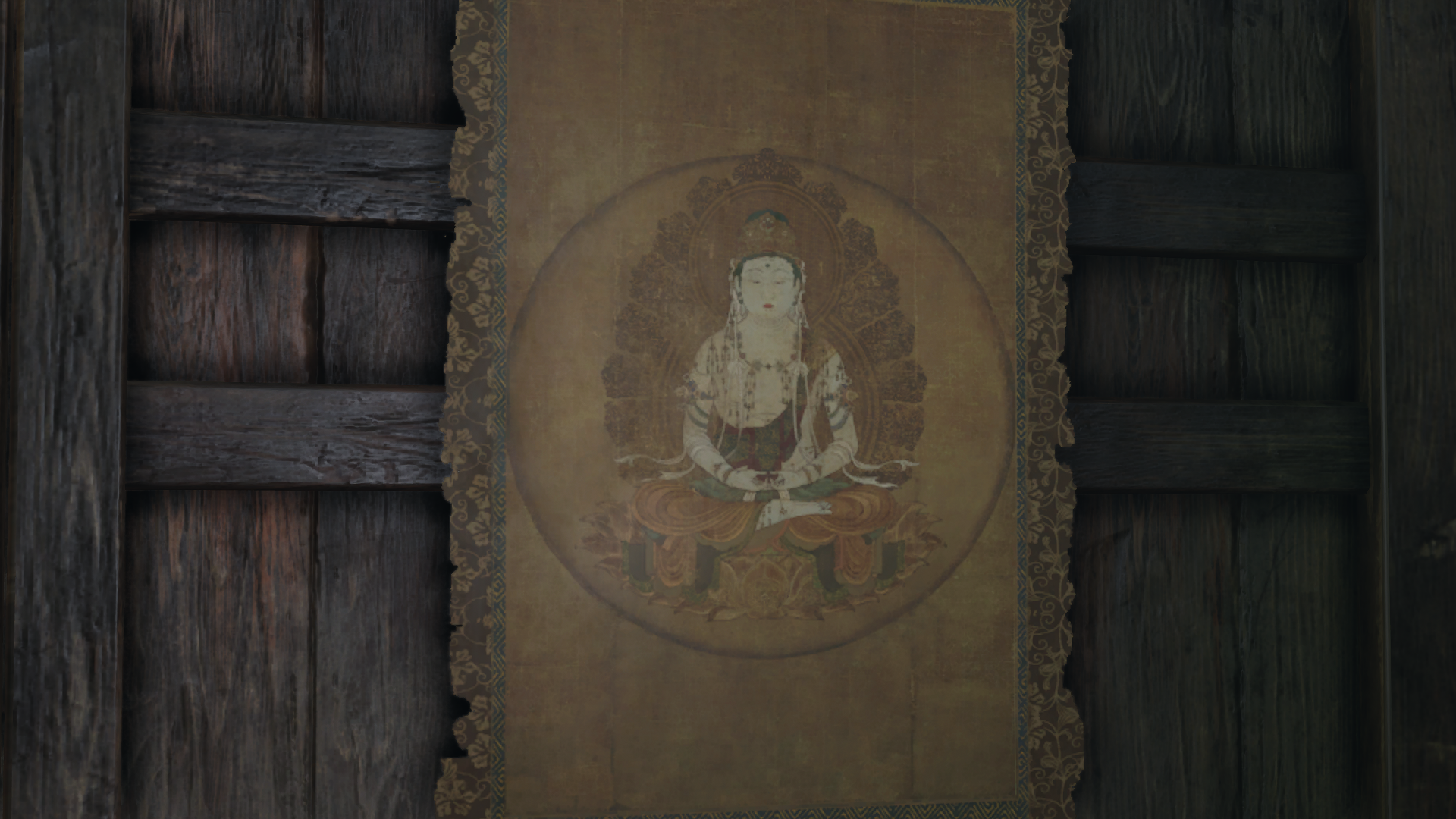 |
When you first arrive in Senpou you speak with The Child of The Rejuvenating Waters through this picture. Therefore, it would make sense that within this world this is the symbol used to reference her. |
The Temple
| In-game: | Comments: |
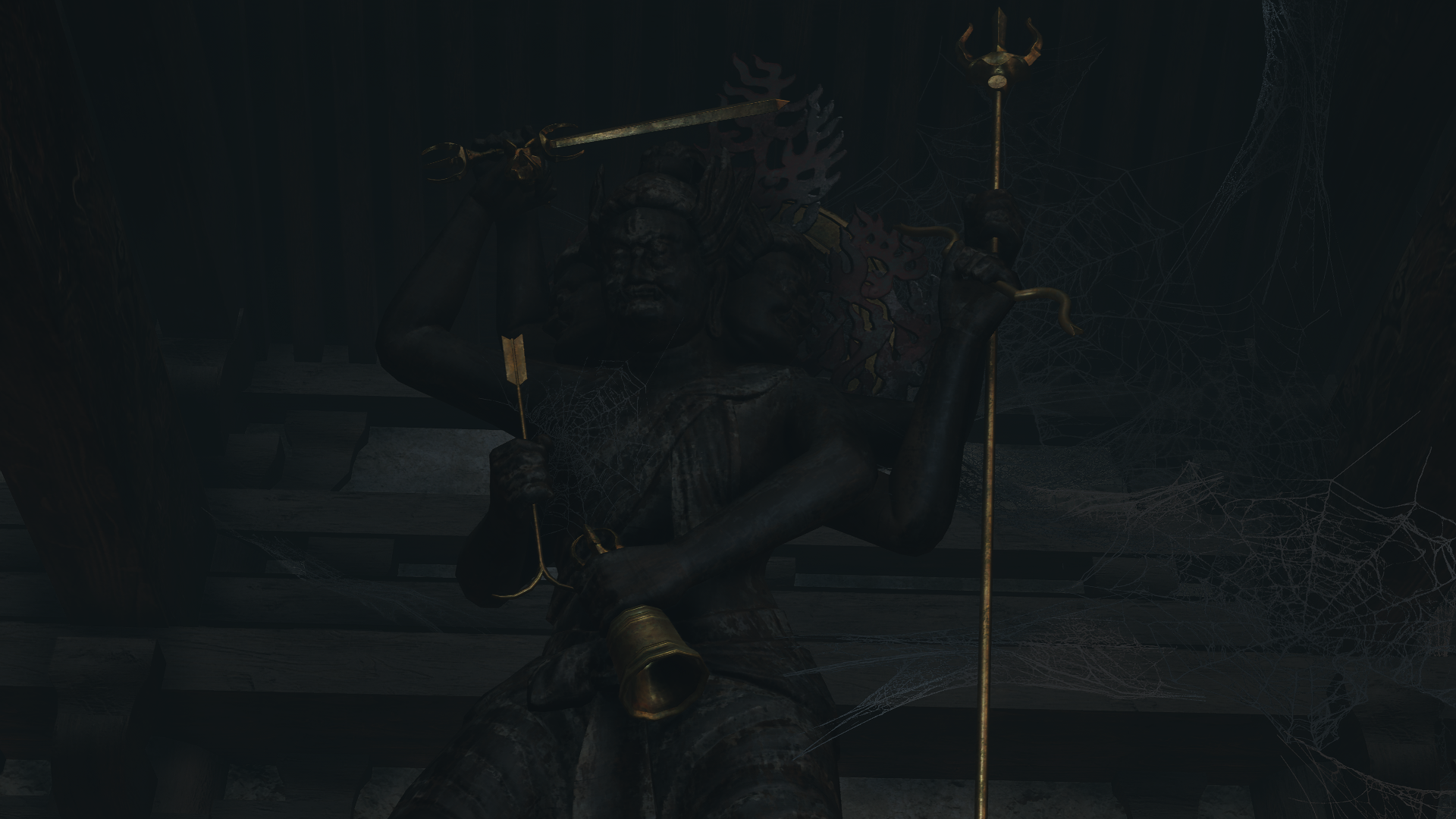 |
The statue in the room you enter when you jump up into the rafters to gain entry into the temple grounds. |
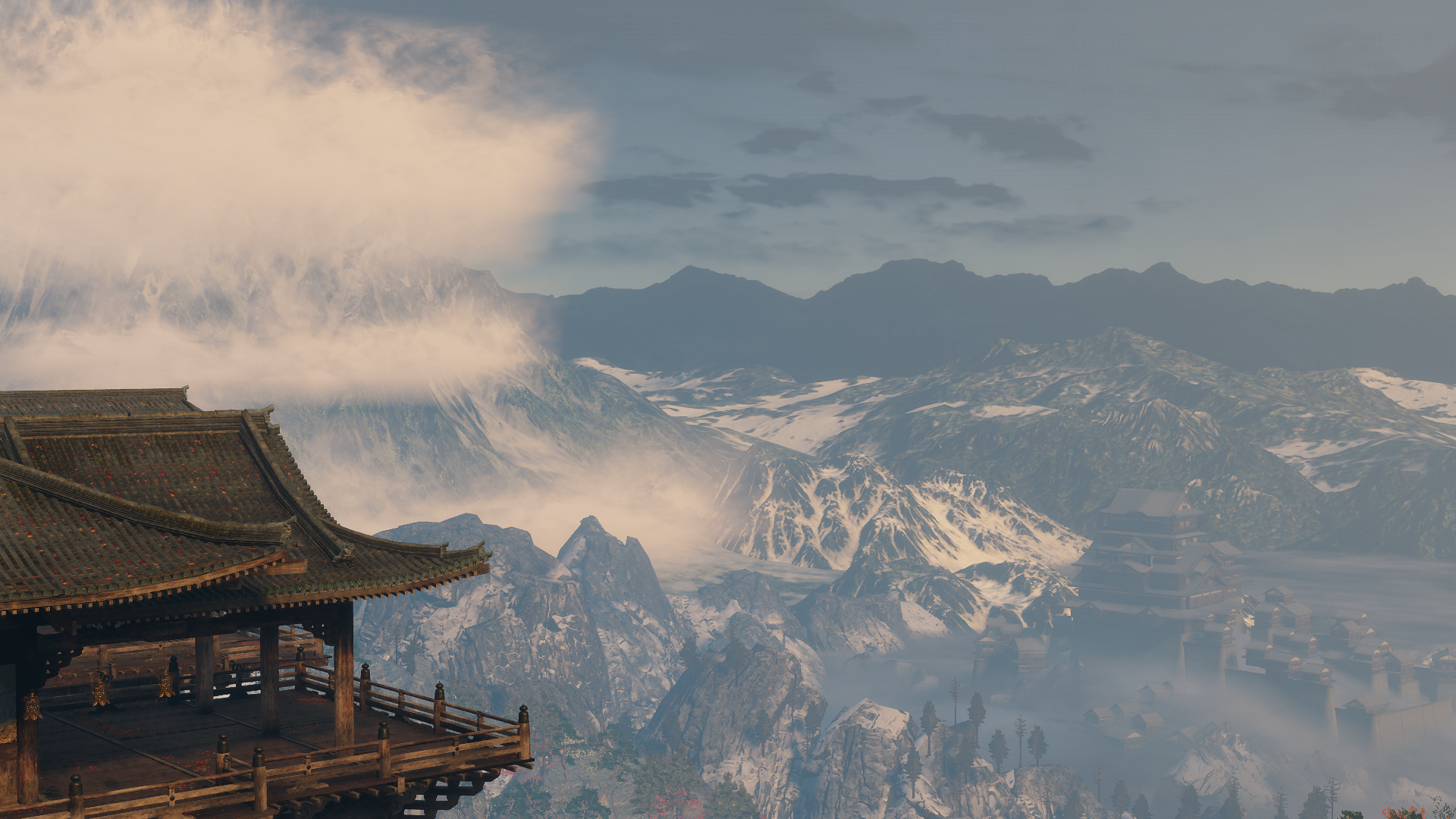 |
Main hall overlooking Ashina castle as well as the surrounding land. |
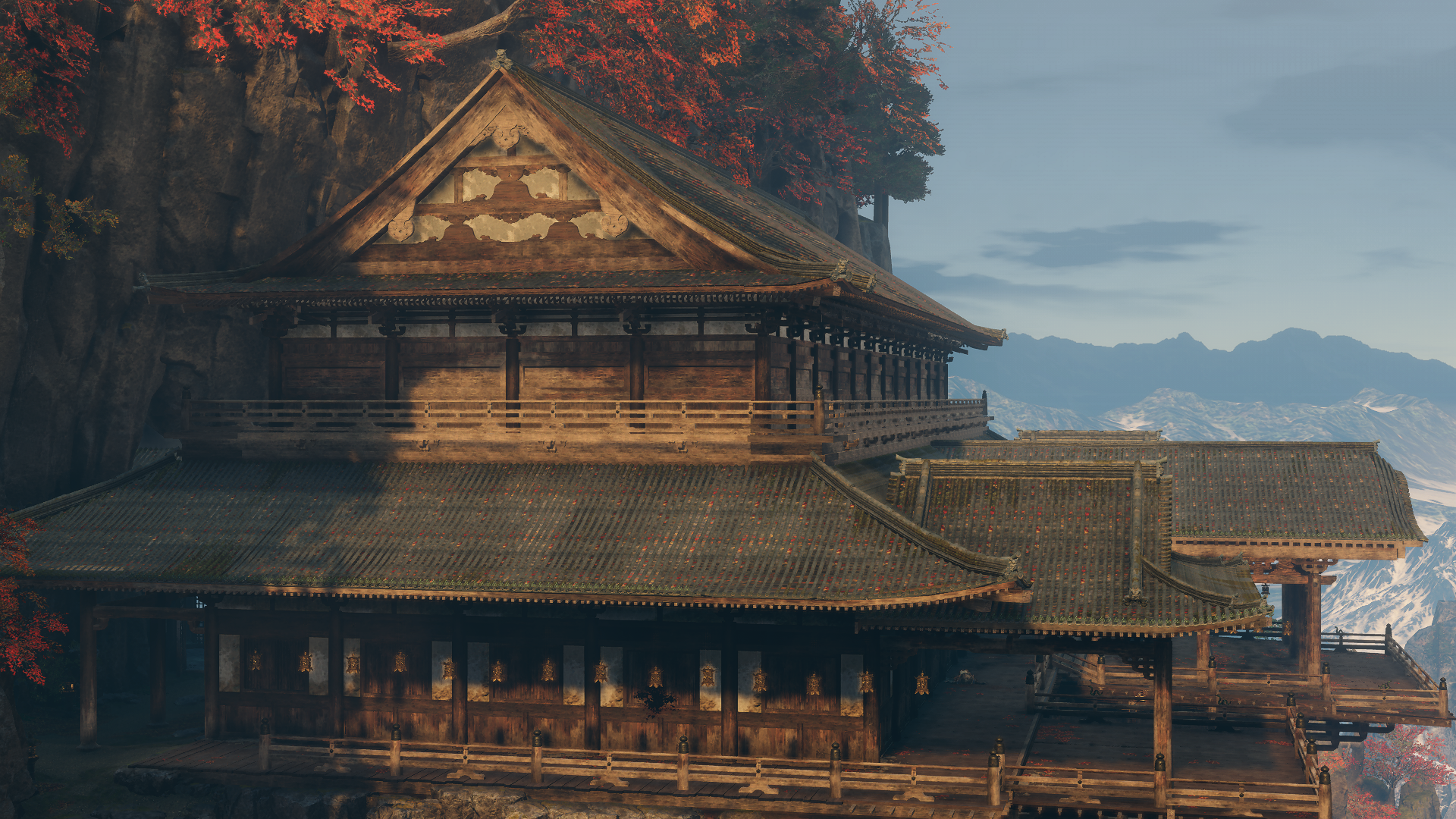 |
The main hall as seen from the pagoda where you find the Senpou Esoteric Text, |
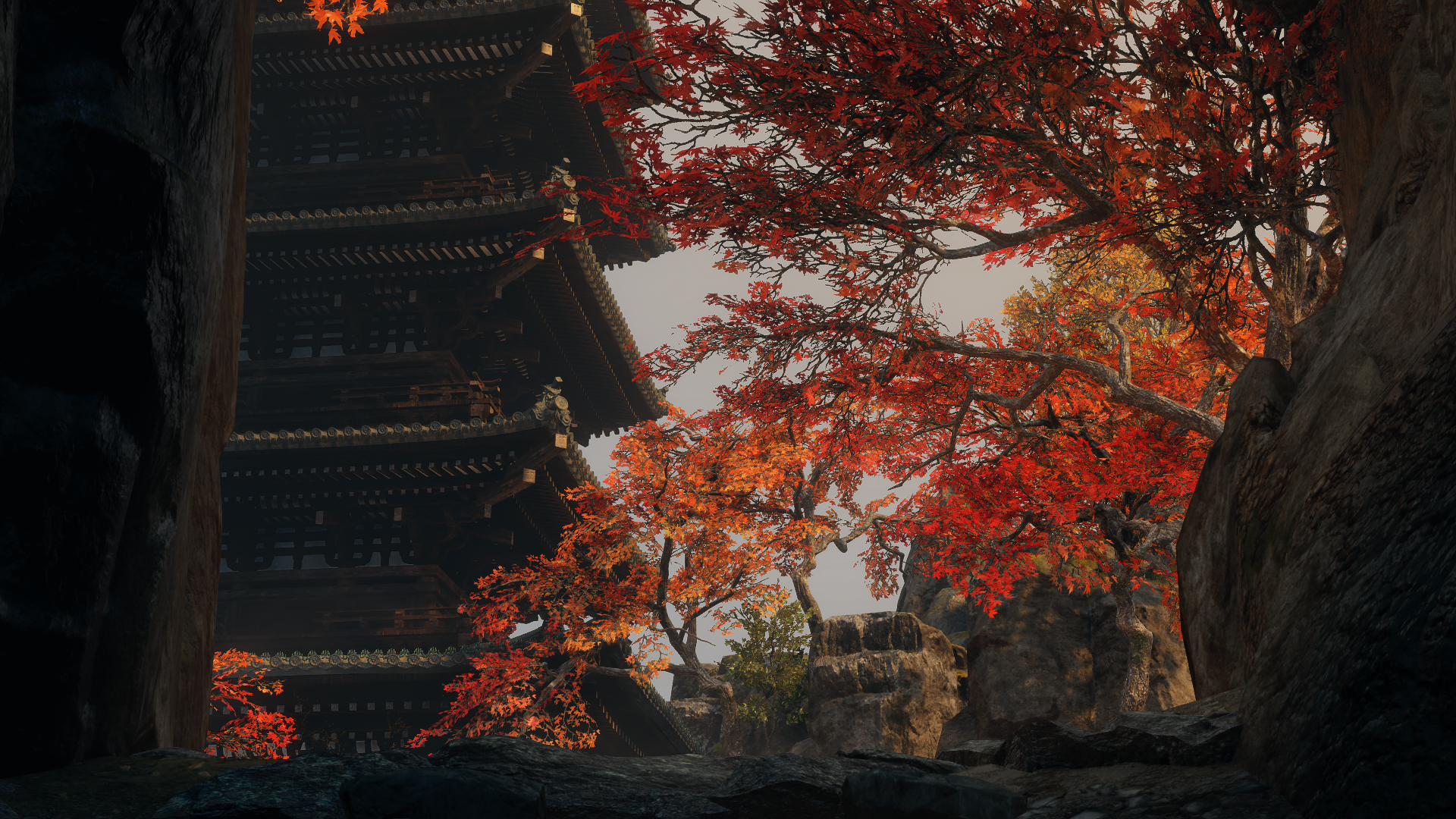 |
The Senpou Temple pagoda which houses the Senpou Esoteric Text. |
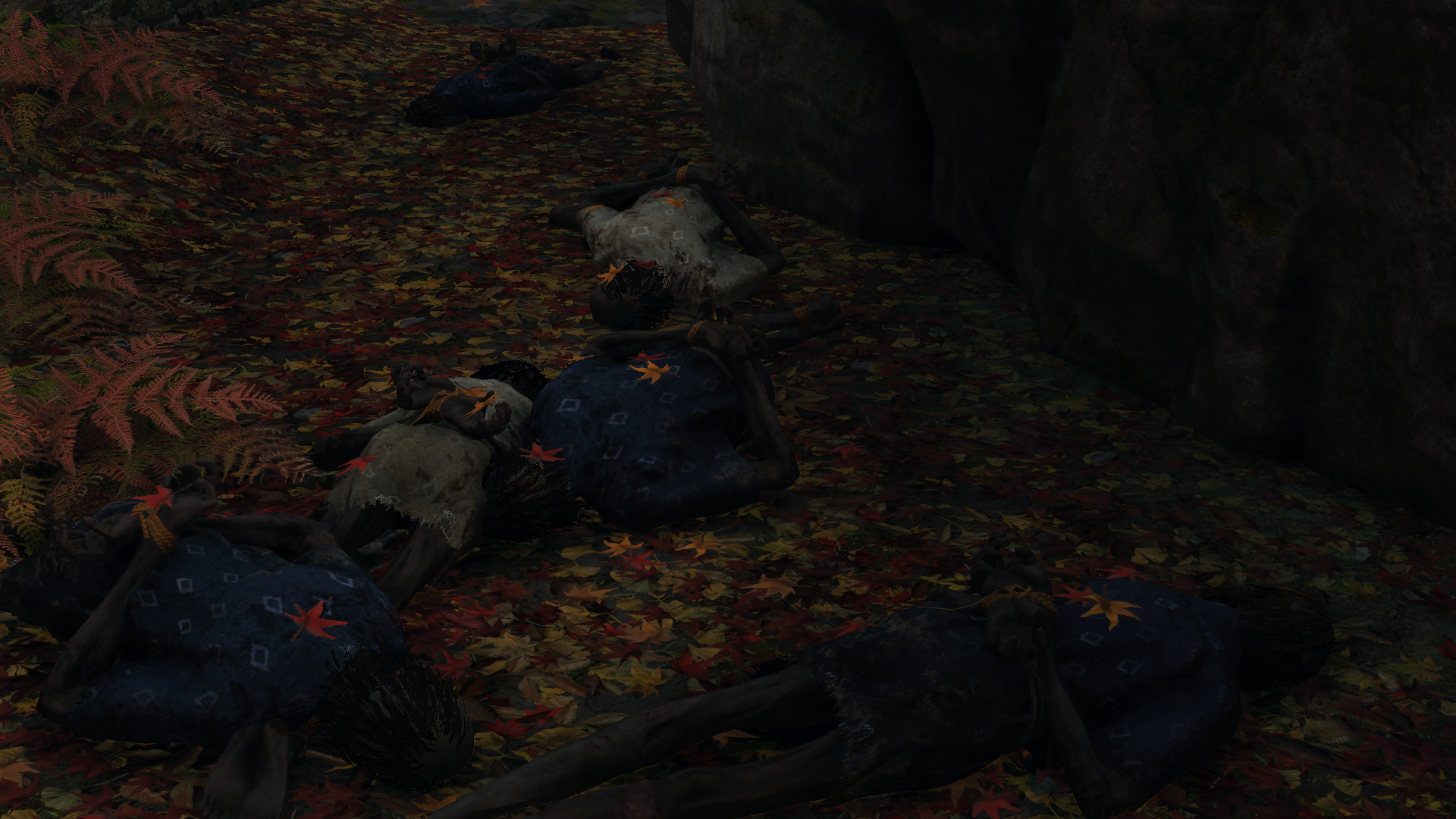 |
Numerous bodies found bound at the hands and feet, face down, and heavily decomposed. |
The Question of The Two Great Trees. |
|
| |
|
| There are only two places in the game I can find these two distinctly large trees. The first you encounter when you first meet The Great Serpent - on the right. The second is when you get to Senpou Temple courtyard and is the tree you need to scale in order to use the kite to fly across the ravine to continue Blackhat Badger's quest-line as well as The Dragon's Homecoming ending. So, what significance do these trees hold? They've been decorated and are clearly much larger than anything else in terms of trees - so why are there only two? |
|
The Mountain:
The Hall:
| In Game: | Explanation: | ||||||||||||||
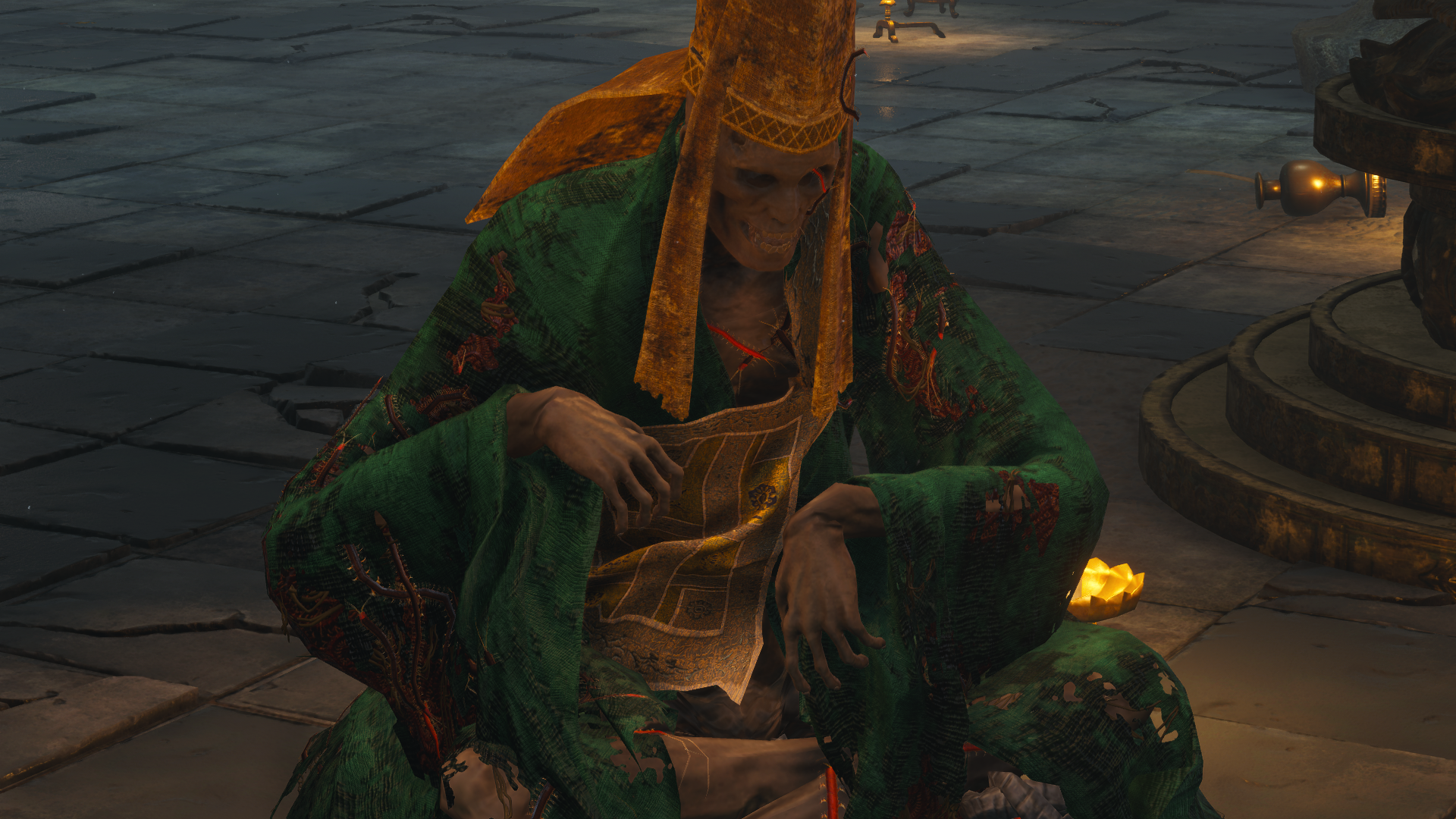 |
This is the Head Priest of Senpou Temple. He sits in front of the alter and mourns what he has inflicted on the only remaining child to undergo the experiments to recreate The Dragon's Heritage. He recognises Sekiro has a connection to The Dragon's Blood purely by the smell. Further speaking to how depraved and far this pious priest has strayed from his path. If you have spoken to one of the faithful - you can ask him about "The Divine One" and he will tell you that he has confined her to The Inner Sanctum and there is no way of getting to her; but if you do see her to give her a text explaining why she has had these things done to her. |
||||||||||||||
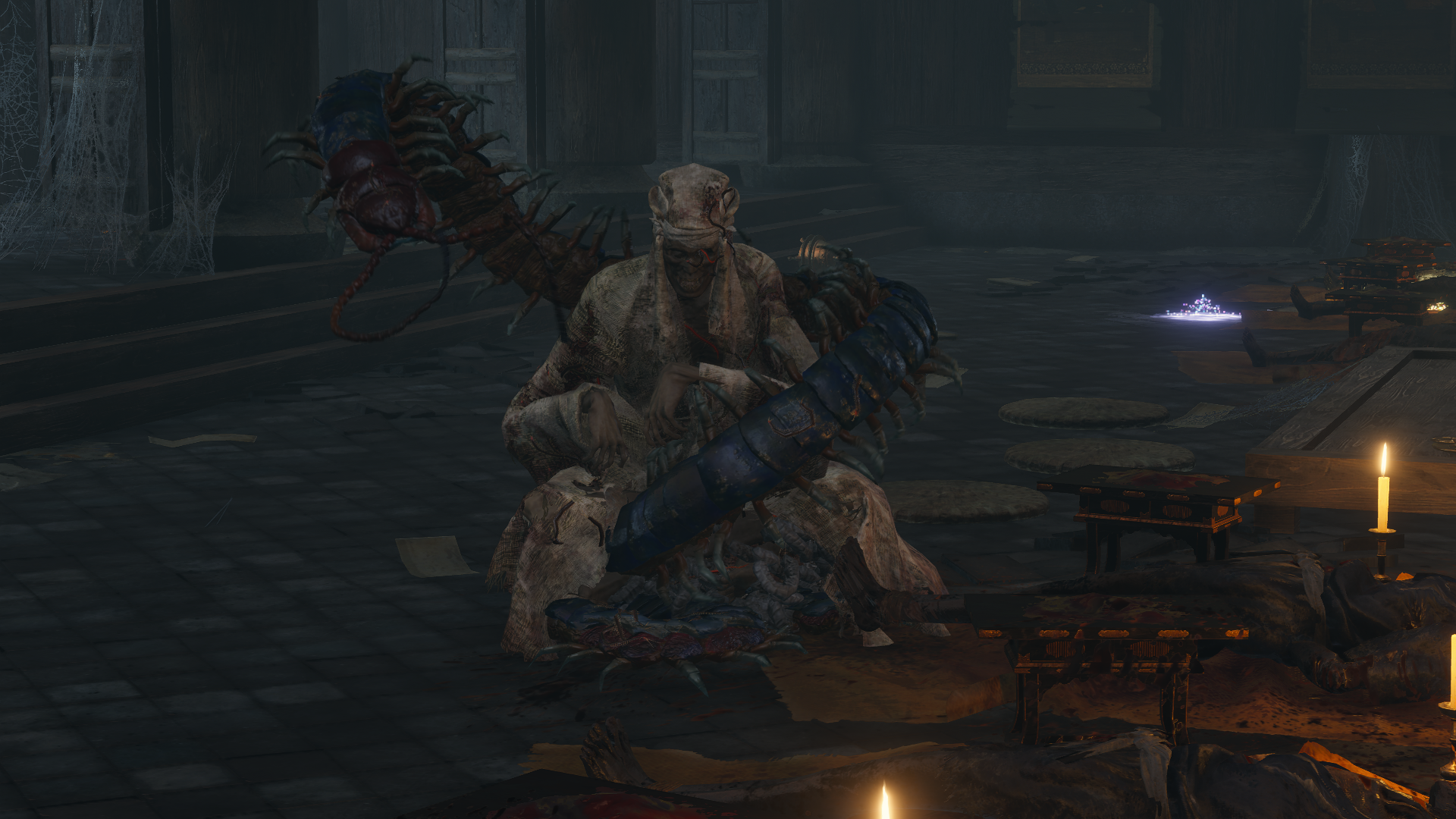 |
Not a kindly old man at all - even within the Head Priest the corruption of immortality lurks. Surrounded by the fetid and horrible scenes of their defilement the order no longer reveres life and peace but seeks to mutilate, befoul, and twist even the helpless to get what they want; immortality. |
||||||||||||||
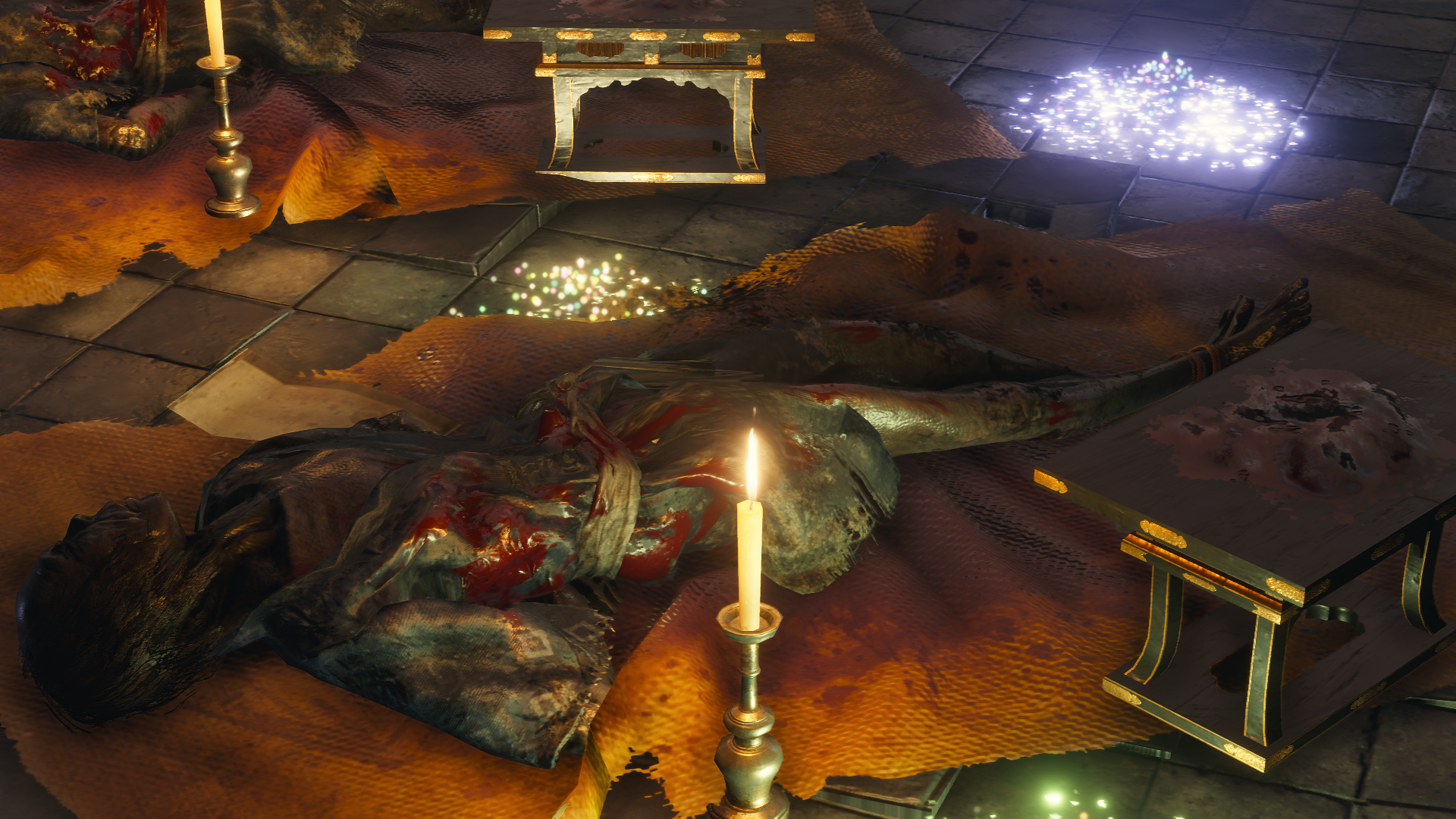 |
What must the hundreds of people abducted and violated felt in their final moments? The twisted expressions are a brief glimpse into the horrors they endured.
|
||||||||||||||
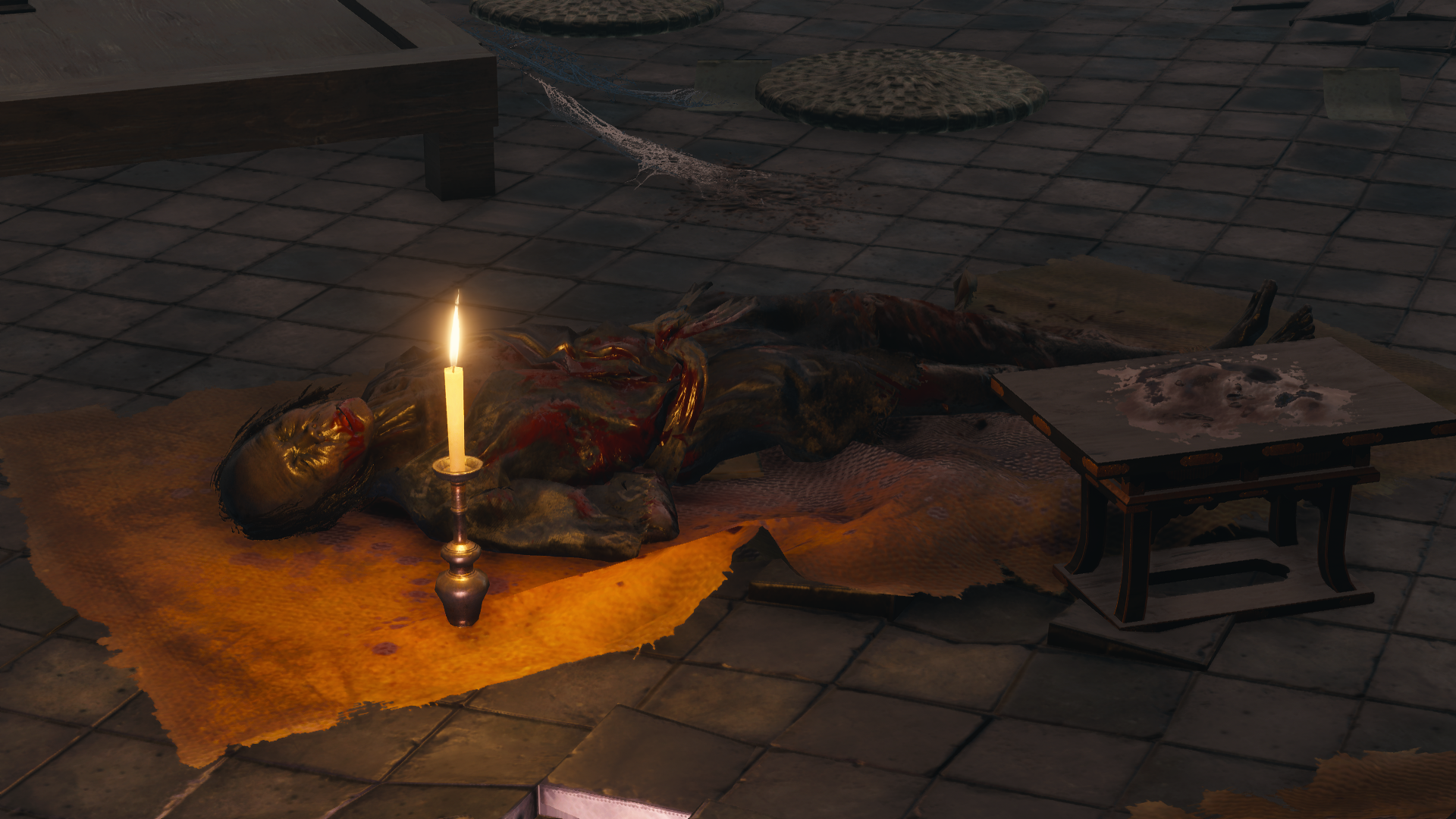 |
Is this what The Child of The Rejuvenating Waters awakened to? To find her arms and legs tethered together, her body defiled, dissected, and cast into damnation. One day a child and the next a monster. |
||||||||||||||
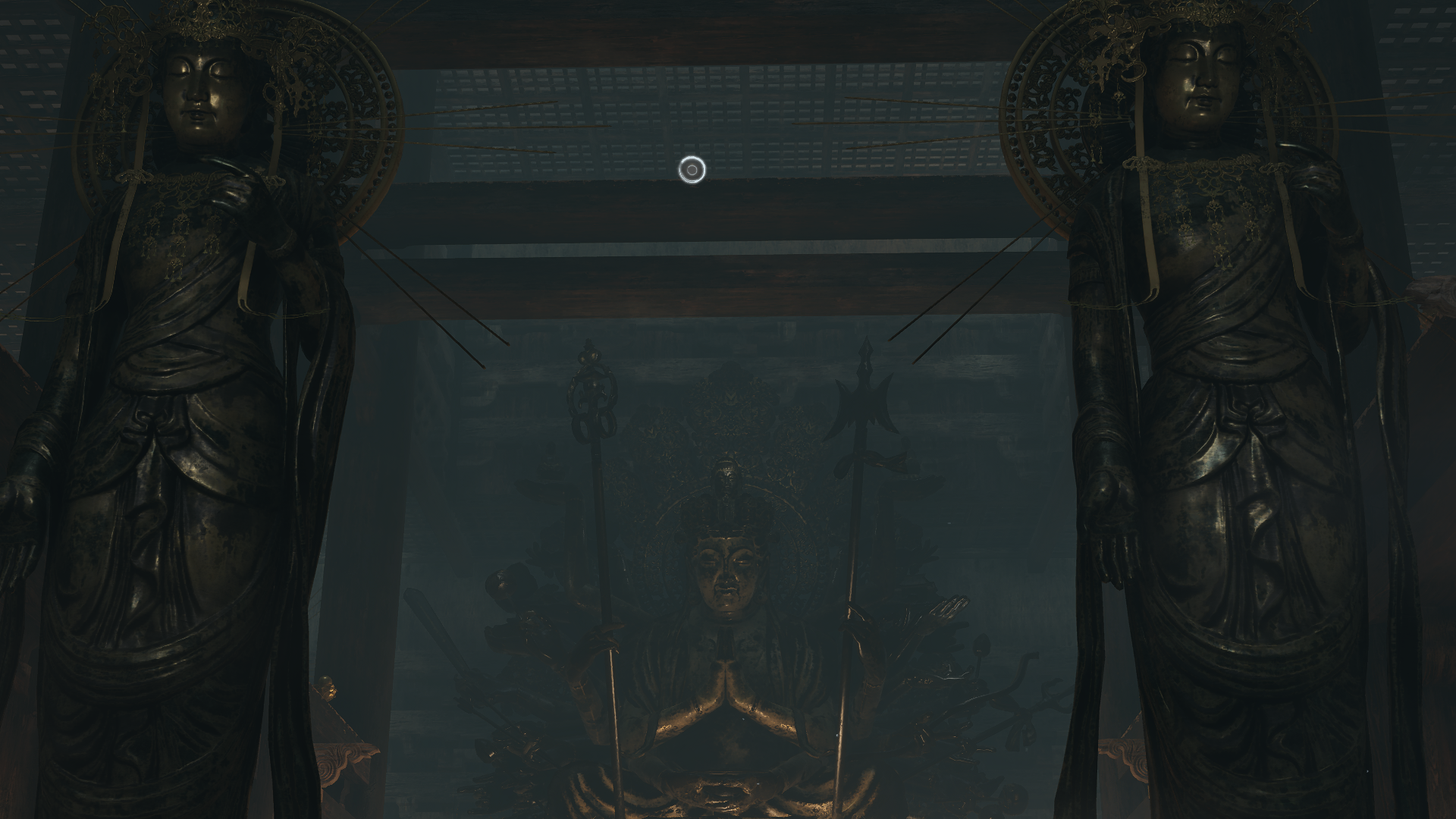 |
In the main hall of the temple you see one central statue flanked by two other statues and surrounded by many smaller statues. This is the Amida Raigo Triad and they are worshiped through Buddhism even to this day. In the middle is Amida, Lord of Infinite Life and Light. To Amida's right is Seishi Bosatsu representing wisdom, and finally to Amida's left is Kannon representing compassion. The smaller figured surrounding the room are Bodhisattva which are individuals who are on the path of enlightenment but have not fully attained it. However, in Sekiro the smaller golden statues would seem to represent the children that did not survive the process when seeking immortality. |
||||||||||||||
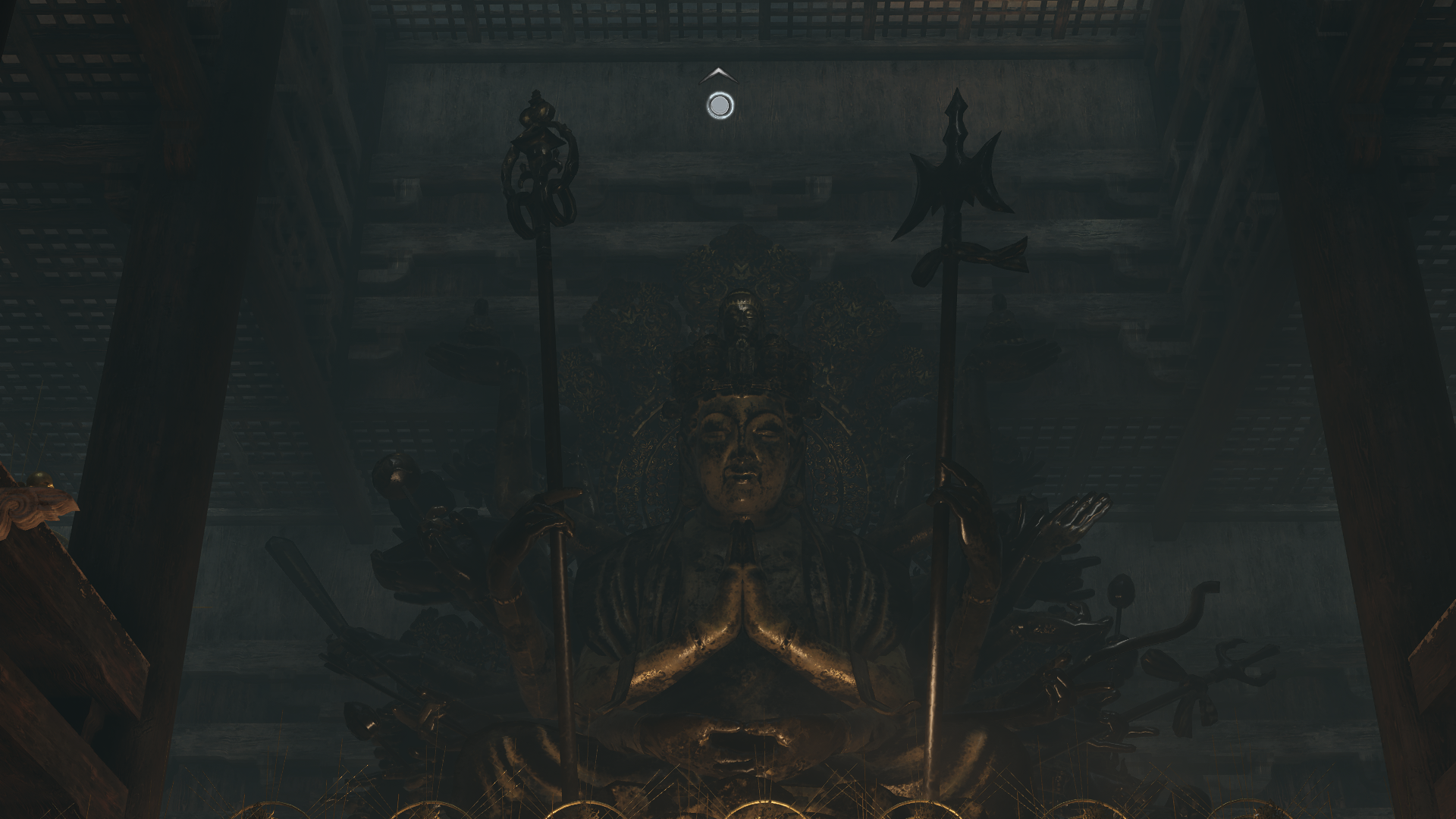 |
|
||||||||||||||
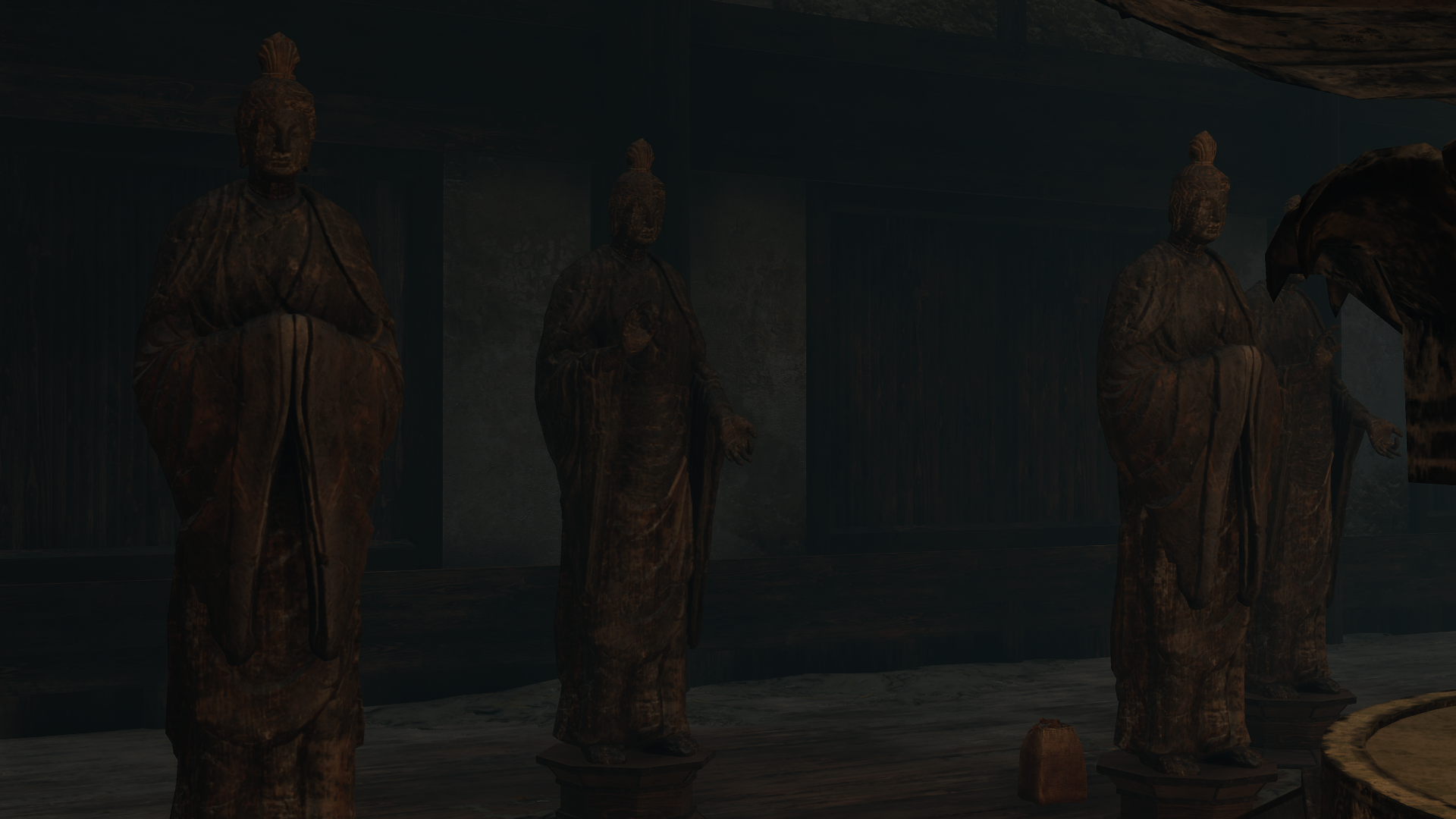 |
The smaller statues hidden below the central statue (Amida) are easy to miss. There are nine of them in total and they all seem to be dressed differently than the surrounding iconography. This would suggest that these are the Nine Emperor Gods which are based in Chinese Buddhism. This might be a subtle connection to where The Dragon's Heritage came from originally. |
||||||||||||||
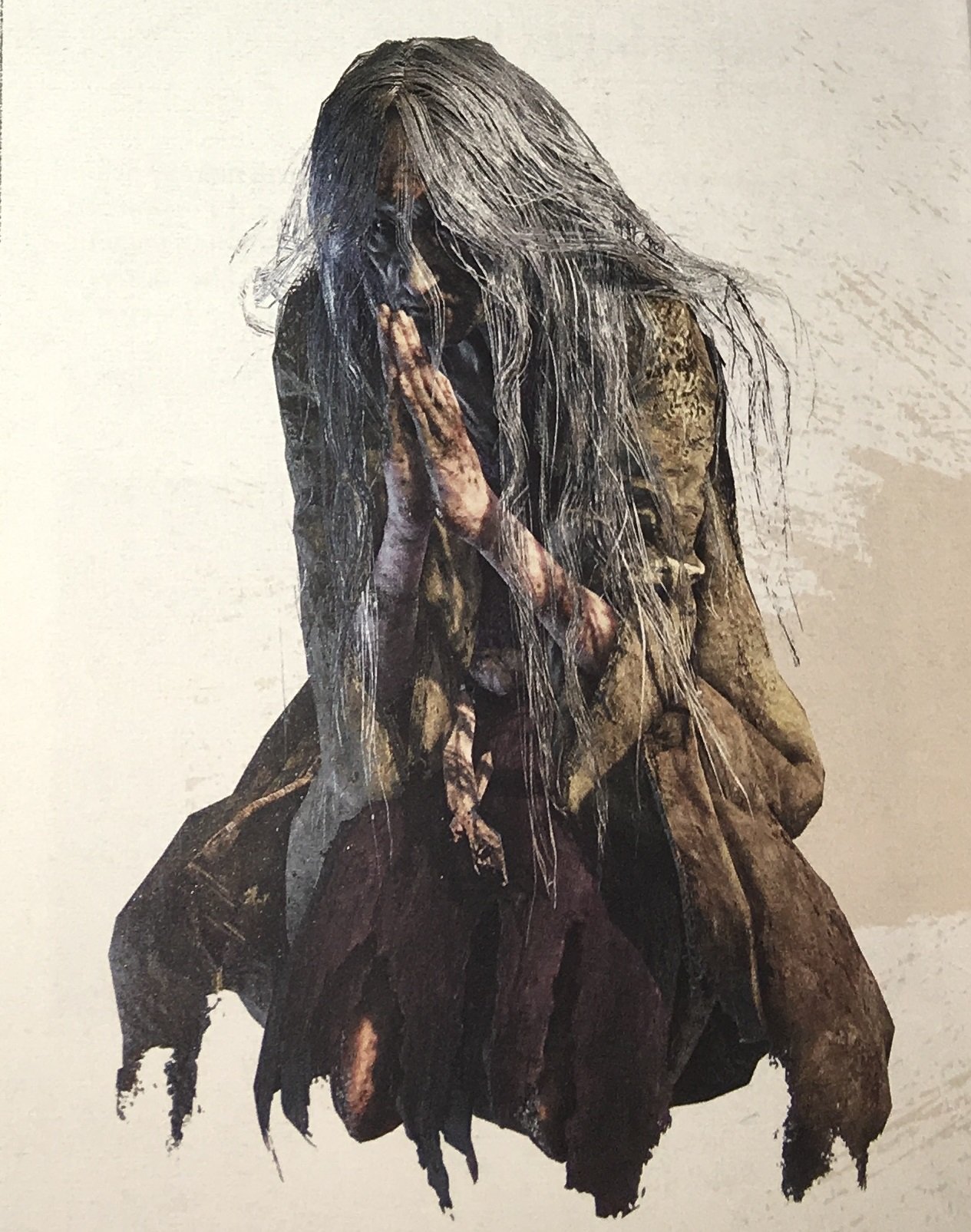 |
The Faithful One: Presented to us as a rambling, mad, and incoherent beggar this individual has a lot more to offer than one would expect. First encountered on the bridge to Ashina Castle after defeating The Blazing Bull - she talks of Senpou Temple, Mt. Kongo, and The Child of The Rejuvenating Waters. Praying for the child's safety and pointing you in the direction of the temple. If you indulge in prayer alongside her she will reward your piety with a reward. Ultimately this individual's goal is to lead you to The Divine Child of Rejuvenating Waters and secure the items needed to achieve The Homecoming Ending. Once you have retrieved both parts of the serpent viscera and offered them to The Divine Child in The Inner Sanctum, The Faithful One can be found to the left when exiting the door into The Main Hall. She thanks you for helping and prays for her safety; then quietly passes away. |
||||||||||||||
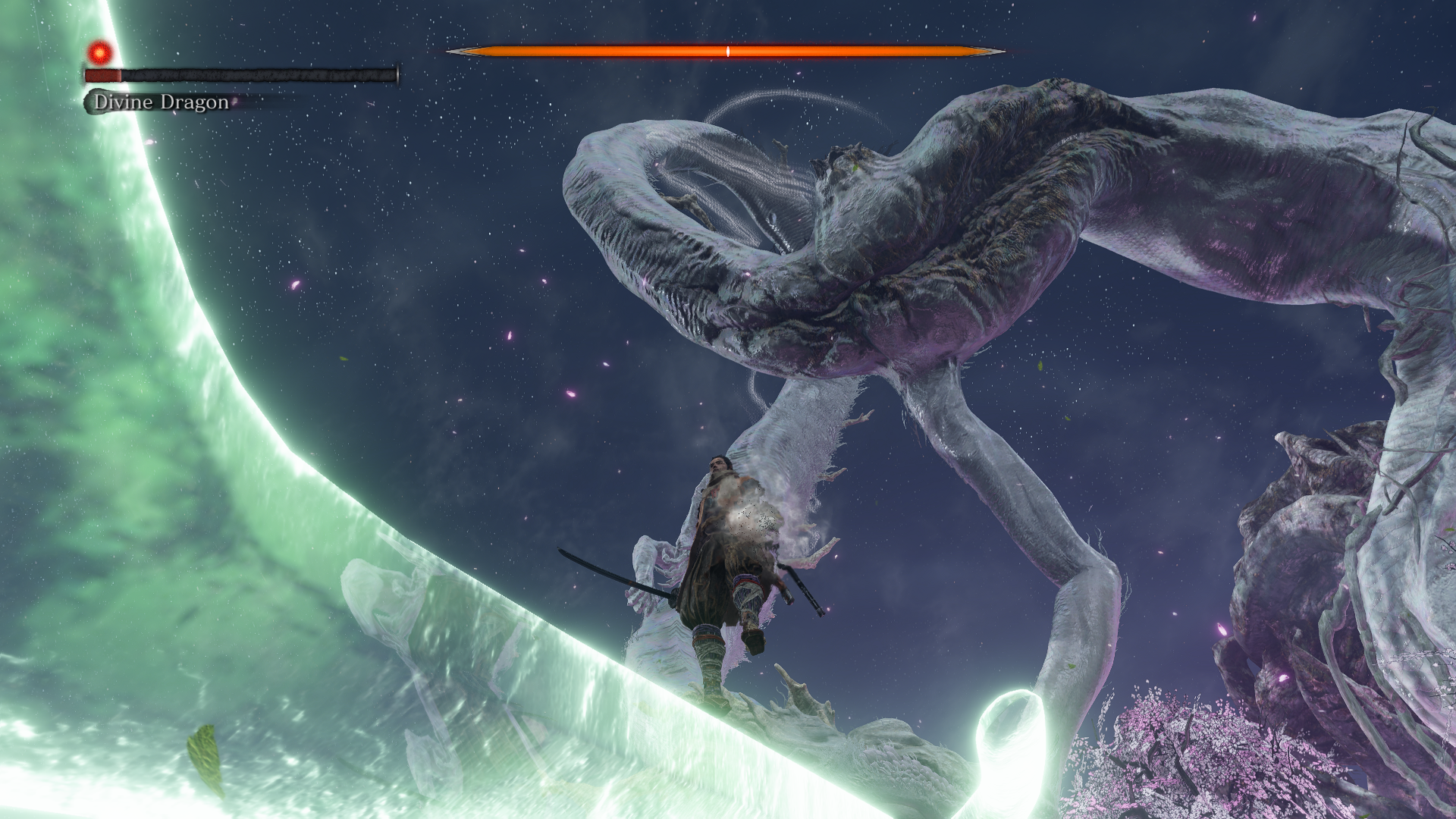 |
Divine Dragon Chest wound and missing arm |
||||||||||||||
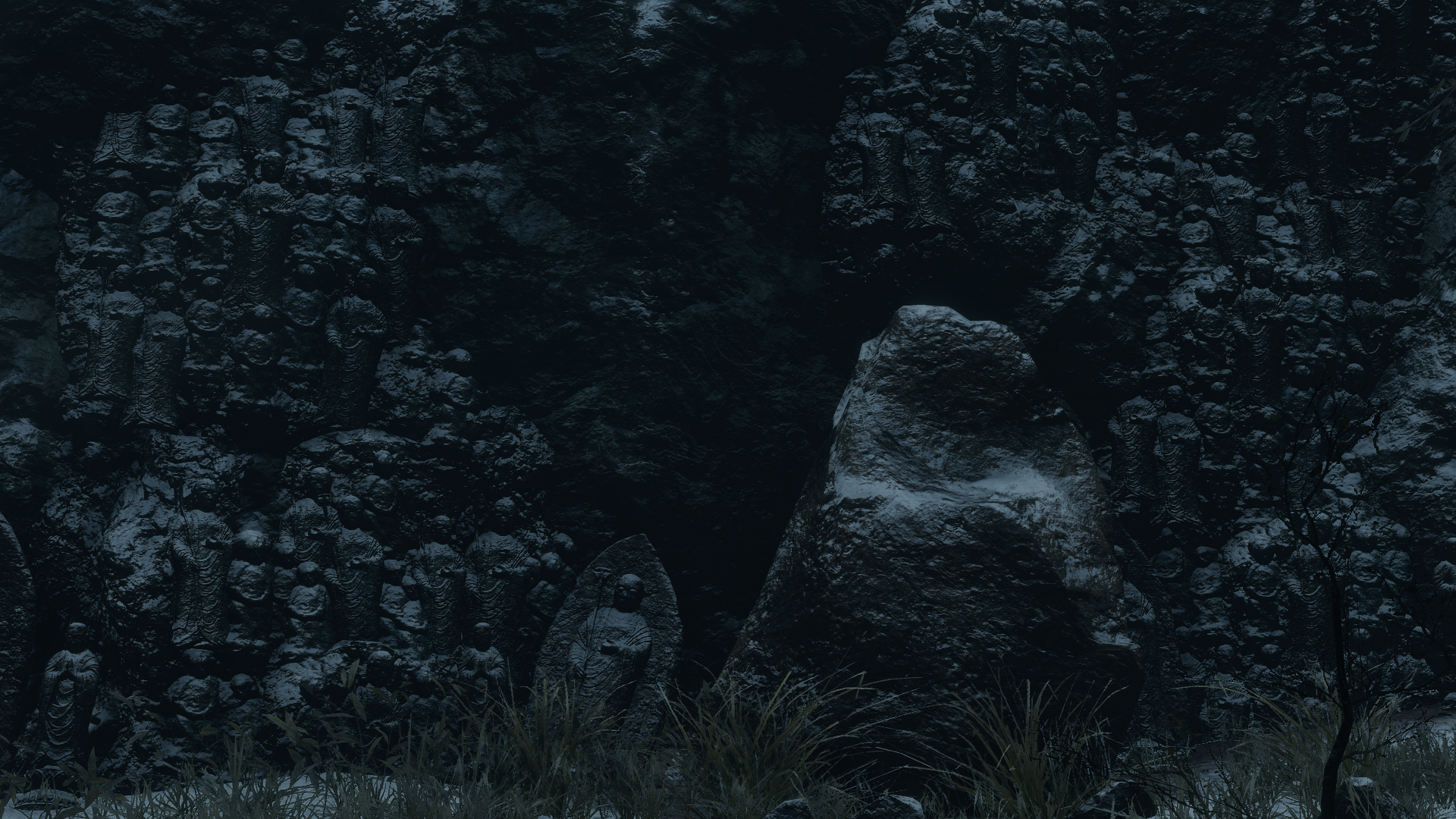 |
Wall of Buddha Abandoned Temple Offering Box |
The Child of The Rejuvenating Waters:
| In-game: | Symbolism & Purpose: |
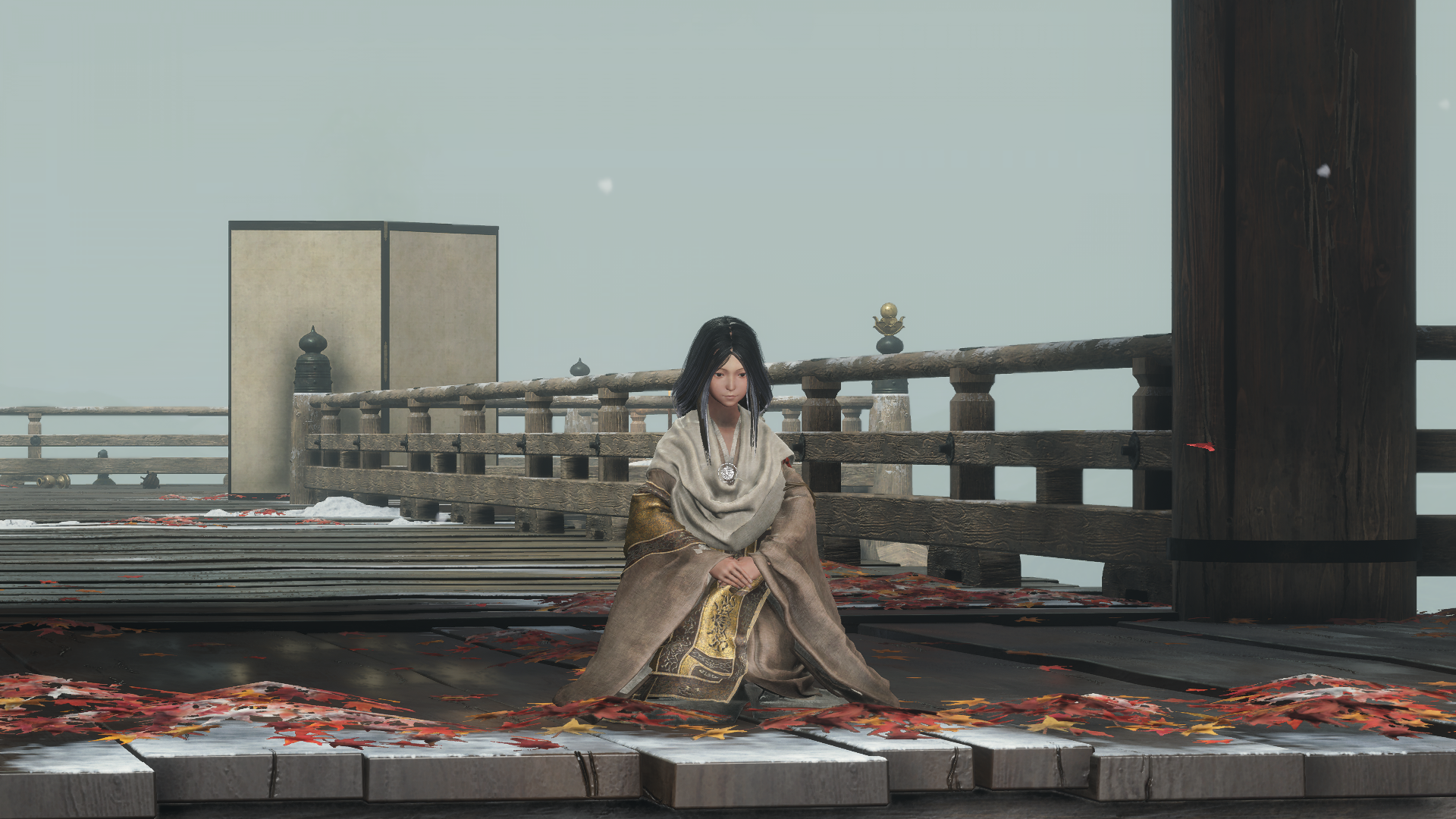 |
Although it might be hard to see - the golden sash that is around The Child of The Rejuvenating Waters has chrysanthemum flowers on it. The golden colour is made up of many individually stitched flowers. The chrysanthemum flower represents longevity and rejuvenation as has been a longstanding symbol used throughout Japan's history. In Japanese it is called "Kiku" |
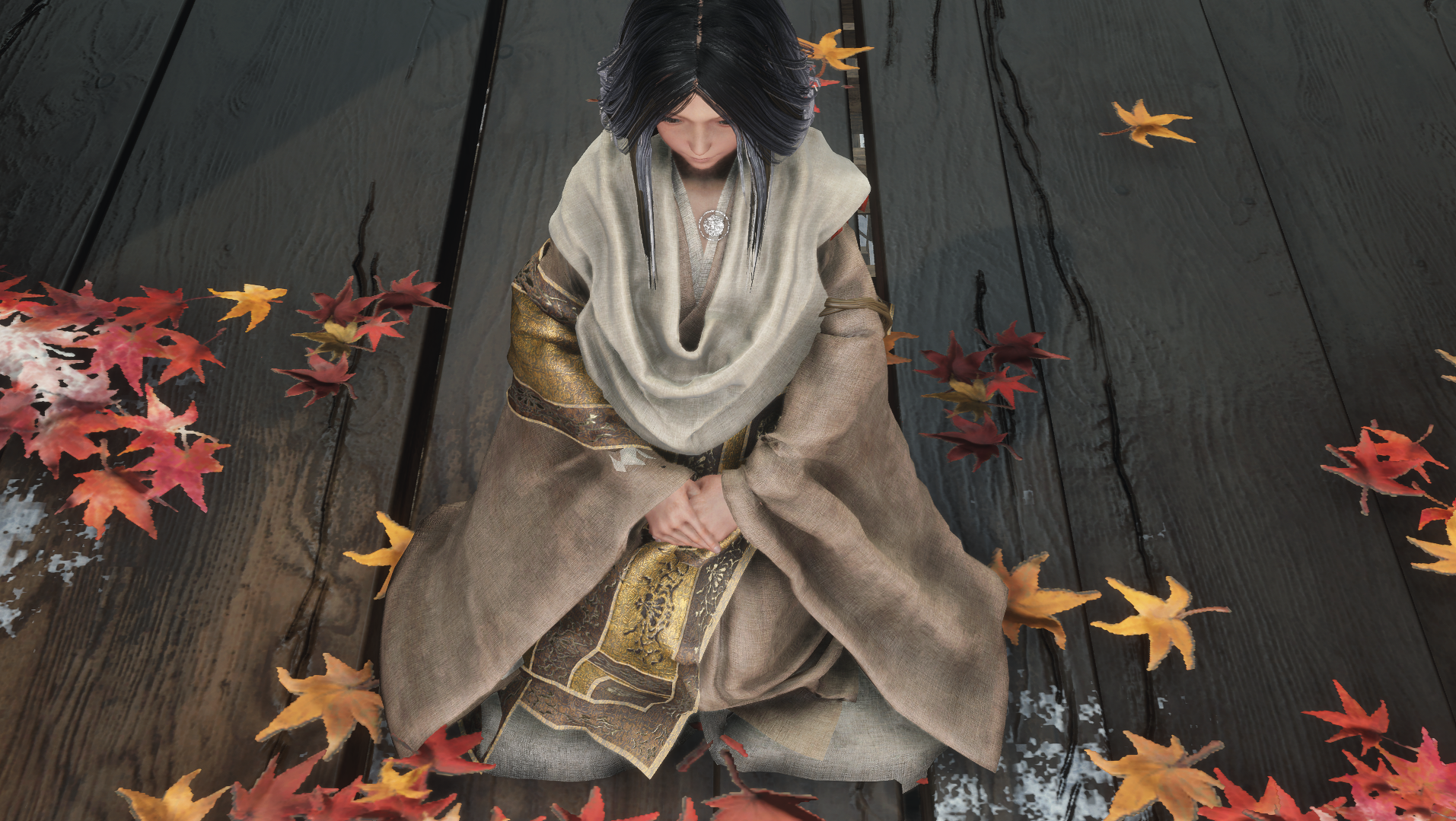 |
The Child of The Rejuvenating Waters is modestly dressed and has a golden sash which is draped around her forearms. The parasol is a symbol that represents protection. It was a symbol that conveyed a royal dignity while also protecting the wearer from harm. Should a child an immortal child on a mountain top need protection from the sun or some something else, it is not clear. |
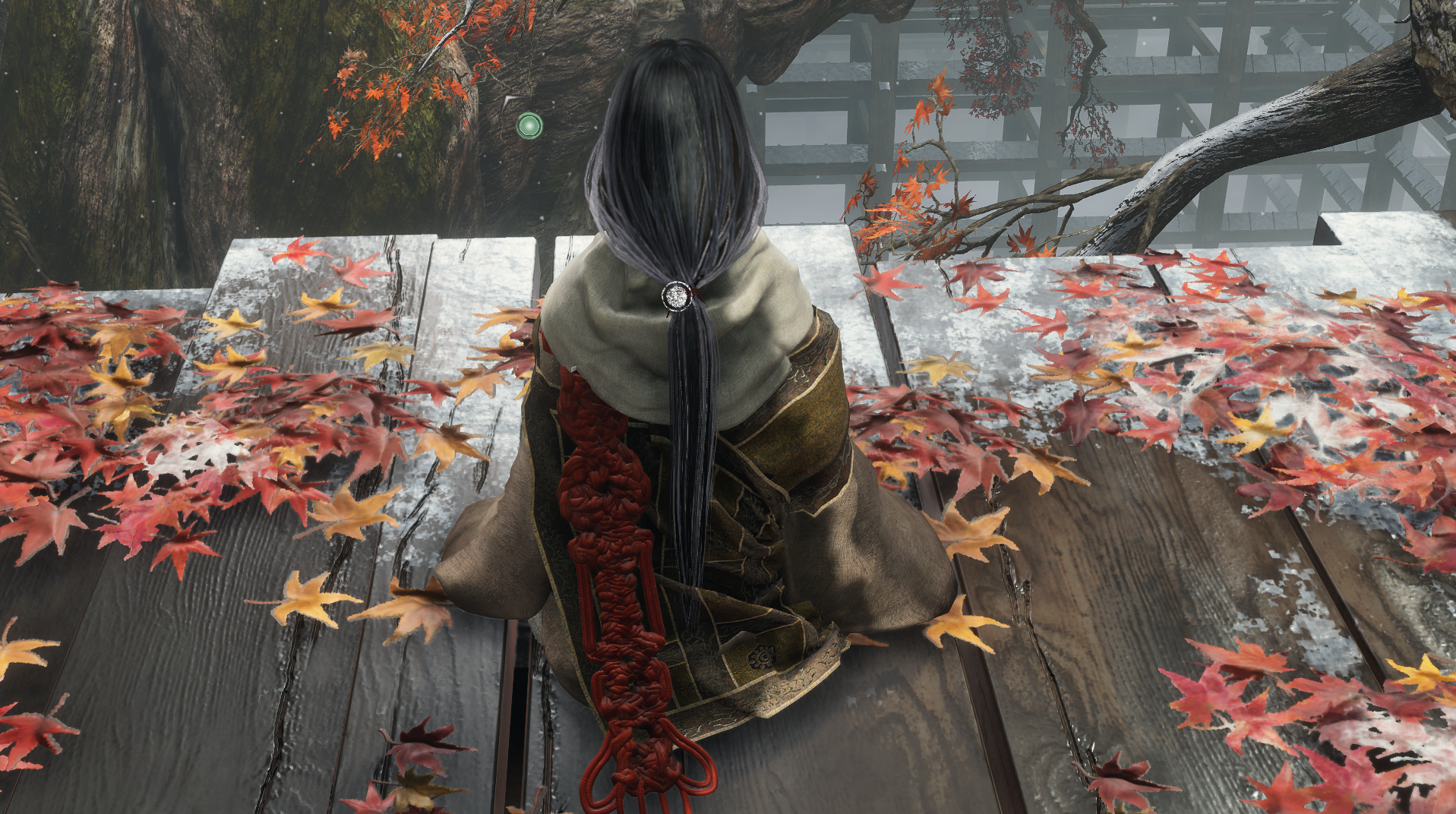 |
The intertwined but closed pattern highlights dedication to faith and the interconnection between all things in a close cycle. As complex as it may look all things are connected and flow as they should.be. The Child of The Rejuvenating Waters was the only individual to survive the horrific experiments carried out by the monks but she wears this eternal knot as a sign that it was not random that she was chosen and there is purpose behind it. |
 Anonymous
AnonymousI enjoyed reading this and I now have much to think about. I just wanted to add that the corpses are either Mibu Villagers or the enemies that strike gongs when they see you since they wear similar clothes.

 Anonymous
Anonymous......The statue in the main hall is not Amida. It doesn't even look remotely close to a Buddha (Nyorai) statue, which are usually in simple monk attires with distinctive hair curls, as opposed to the elaborate jewelry and crowns of Bodhisattvas. There are exceptions to this rule, like Jizo (Bodhisattva in simple monk attires) and Dainichi (Buddha with lavishly decorated crowns and clothes). However, this is not one of such cases. With the eleven heads on its crown, numerous hands all holding objects, and the specific gesture in which one pair of hands clasps together in veneration, and another pair of hands doing the meditation mudra, this is clearly a Senju Kannon statue.

 Anonymous
AnonymousThis is interesting work. It's a shame there's no link to it from the lore page.


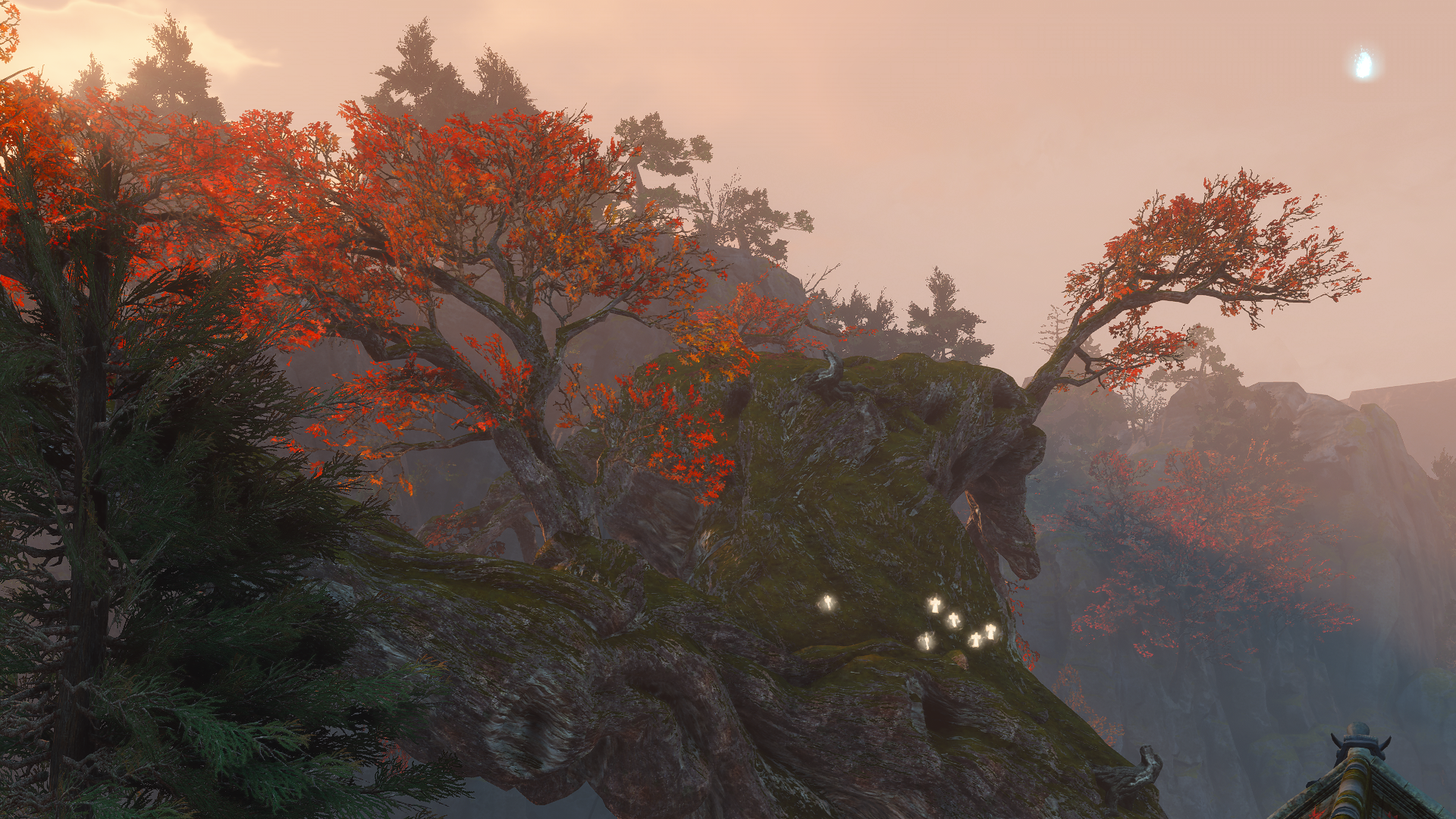
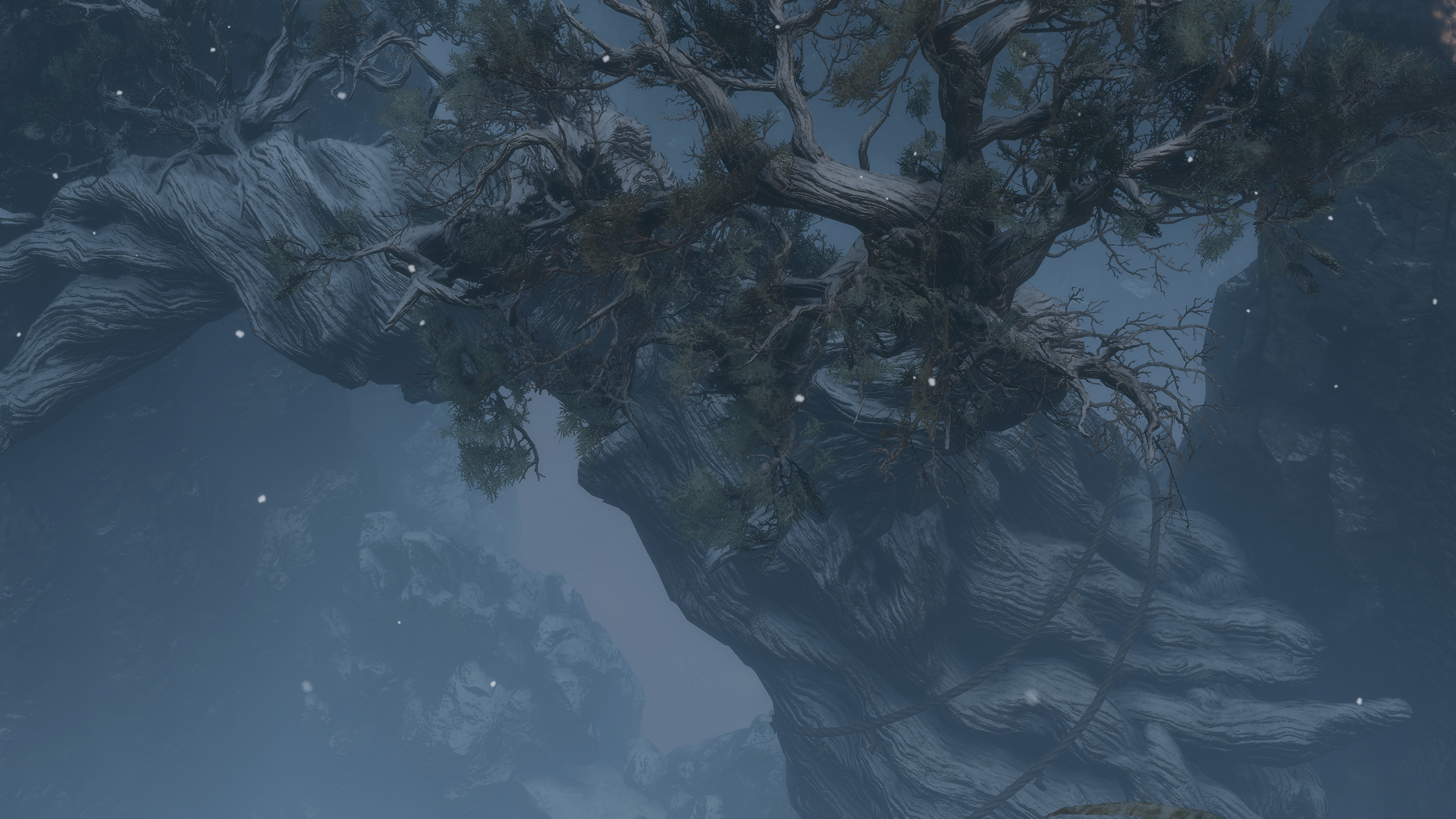
Those poor children suffered? I was hoping that the pain before their deaths didn't last! Damn these wretched, pathetic monks! To hell with them!
0
+10
-1